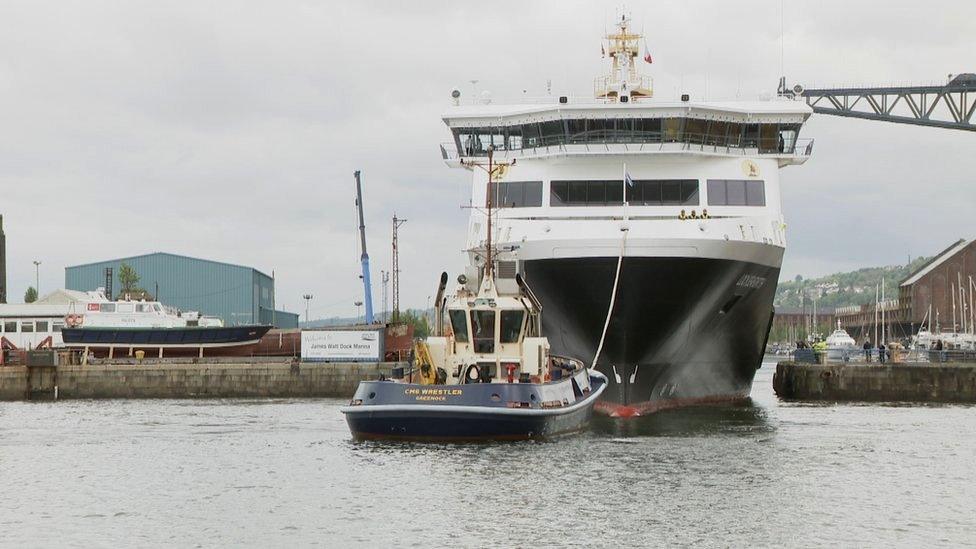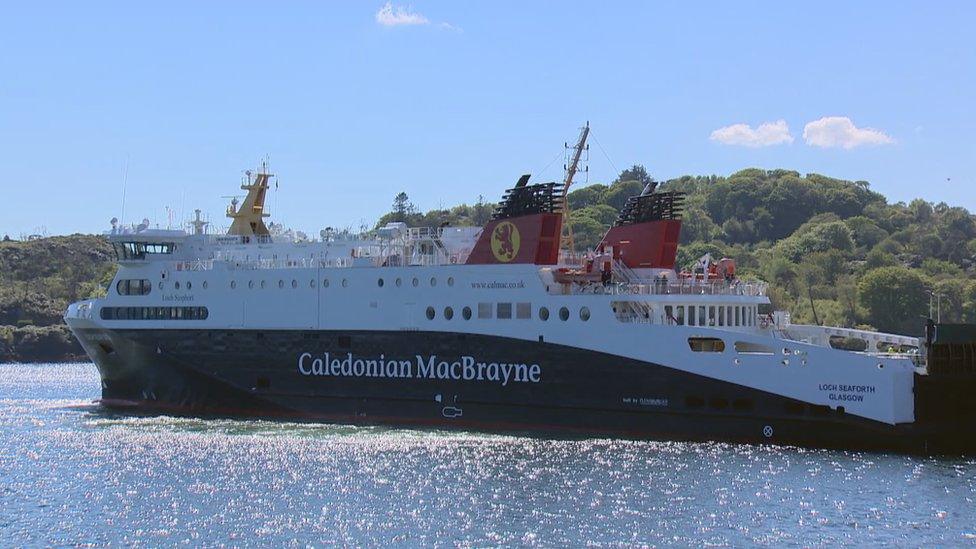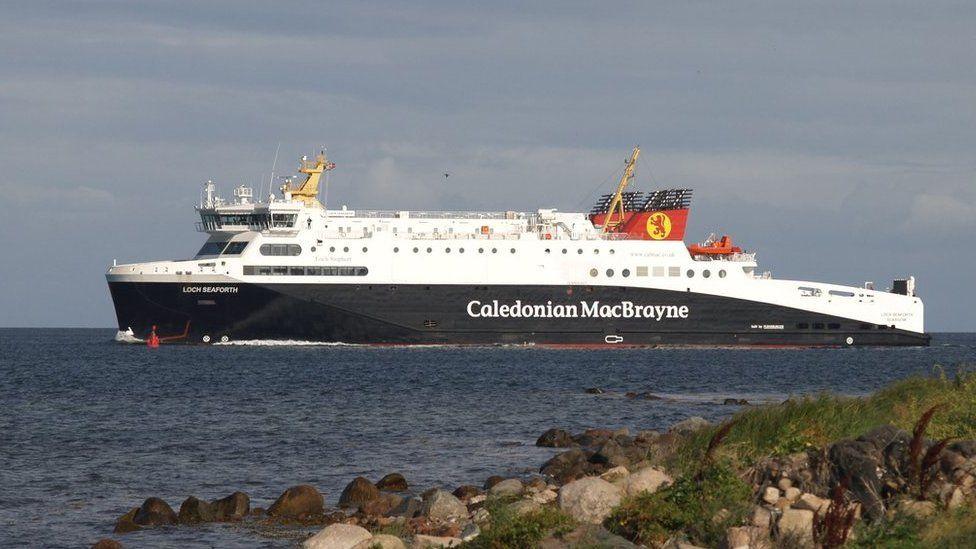Loch Seaforth ferry failure may have been caused by worn-out screws
- Published

Early indications are that worn-out piston screws may have caused the breakdown of CalMac's MV Loch Seaforth.
The ferry underwent major repairs after suffering engine failure in April.
The breakdown caused wider disruption to CalMac's west coast network because other ferries had to provide cover.
CalMac said the screws should have been replaced in 2019. An independent report has been commissioned to investigate why this did not happen.
It is believed one of the ferry's piston crowns may have separated from its body and damaged the cylinder head and liner, which caused debris to enter the oil system.
Subsequent repairs to the engines should have enabled the ferry to return to service on 17 May but separately, further damage was caused by the presence of debris in the system when the engines were started up.
This delayed the return of the Loch Seaforth to service until 31 May while further remedial work was performed.
CalMac said the engine manufacturer who was commissioned to perform the repair had acknowledged responsibility for failure to thoroughly clear the engine of debris.

Loch Seaforth was guided out of the Clyde after weeks of repairs
CalMac's managing director Robbie Drummond said: "Up until now our entire focus as a company has been on returning the Loch Seaforth to service so that we could address the impact her loss was having to our customers.
"That has now been achieved successfully and I would like to reiterate my sincere and heartfelt apology for the disruption this incident and the knock-on effects it caused.
"We are taking full accountability for the incident and are already investigating exactly what happened.
"We have selected a global incident investigation company who lead and facilitate major investigations worldwide to prepare an independent report on the process."
Technical investigations
He said technical investigations by the engine manufacturer were ongoing to determine the root cause of the failure.
Results will take up to eight weeks and may not be conclusive.
"We will implement all recommendations in full made by the independent investigation company to mitigate against situations like this happening in future," he said.
"I want to reassure our customers and our stakeholders that we are in the process of checking all other technical bulletins and are putting processes in place to mitigate against this kind of incident happening again."
The 116m-long (380ft) vessel is the largest and fastest in CalMac's fleet, and can carry up to 143 cars and 700 passengers.

It's been said "for want of a nail, the kingdom was lost." Calmac's just learned that old adage still holds true - and that big problems tend to start small.
In this case, lifeline services to island communities were disrupted for six weeks because of the suspected failure of a single piston screw. This little item sits at the heart of MV Loch Seaforth's engines. We've learned it should have been replaced during routine maintenance in 2019. For whatever reason, that didn't happen.
In mid-April, it seems to have caused the port engine's piston crown to come loose which damaged the cylinder head. That then caused chunks of debris to get into the engine's oil system which caused yet more damage, and an utter nightmare for the engineers, who toiled for six weeks to put it all right.
Why were the piston screws not replaced two years ago? Why this apparent failure in basic maintenance? Calmac have no spare ferries, so they need all their fleet to work. Their ferries are ageing so they put an emphasis on resilience and repair. In this case, that plan has come badly unstuck.
The ferry operator has asked for an independent report into what went wrong. What's already crystal clear is that routine maintenance can't be delayed.
Related topics
- Published1 June 2021

- Published14 May 2021

- Published13 May 2021

- Published4 May 2021

- Published23 April 2021

- Published22 April 2021
